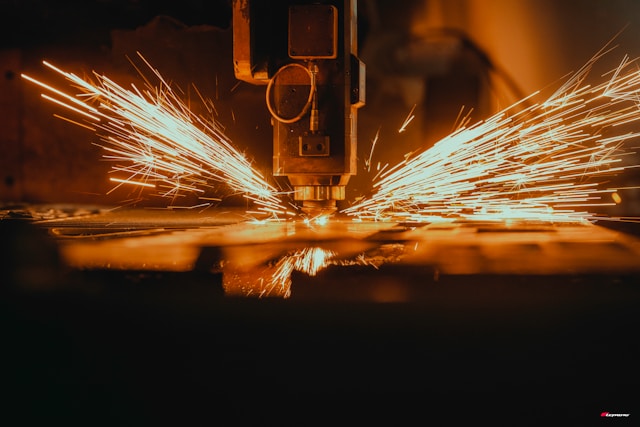Is it ever in your head how the things we make affect the planet? If you’re curious about manufacturing and environmental impact, you are at the right place. Today we’re diving deep into CNC-Computer Numerical Control Manufacturing and how it can help us reduce our carbon footprints, that’s right! Let’s break it down together.
Understanding Carbon Footprint in CNC Manufacturing
First, what is a carbon footprint? Quite simply, it’s a measure of the total amount of greenhouse gases given off by our activities, and it’s a big deal in terms of climate change. In the manufacturing world, the CNC can add to this footprint often via energy use and waste.
But here’s the kicker: the CNC machining process can be a more eco-friendly option compared to traditional methods. It really depends on how we utilize it. Understanding the ins and outs of this process will help us explore its environmental potential more effectively.
Optimizing CNC Processes to Lower Carbon Emissions
Well, how does it happen that CNC technologies can help reduce those unwanted emissions? Now, let’s talk about optimization. First of all, we have energy-efficient machinery. The use of high-efficiency CNC machines can greatly cut down on energy consumption. These machines perform the same amount of work, yet consume less power.
Now, process optimization: think car tuning for better mileage, where a reduction in idle time could be all that’s needed. Same way, streamlining production workflows can yield faster and more efficient operations.
And let’s not forget the sophisticated software: CAD-Computer-Aided Design systems and CAM-Computer-Aided Manufacturing systems-they enhance accuracy and save energy due to the optimization of the whole manufacturing process. It is just like having some kind of smart assistant that keeps everything under control.
Material Selection and Waste Reduction
Now, let’s get into the materials. A choice of material can make a big difference in terms of emission discharge. Biodegradable and recyclable are the trends to watch. Not only because they reduce the carbon footprint, but because they tend to be much healthier for the planet.
And how about waste? We all know that waste is a problem in manufacturing. However, we minimize scrap with CNC. Precision cutting techniques ensure we use materials more efficiently, while minimizing machine downtime for uninterrupted workflows. In addition, recycling of metal and plastic wastes is a good way to maintain things green.
Integrating Renewable Energy Sources
Ever wonder how your local CNC facility powers its machines? If they’re using fossil fuels, that’s a huge source of emissions. But here’s the good news: an increasing number of CNC manufacturers are resorting to renewable energy sources such as solar and wind power. This shift not only cuts carbon emissions but also shows a commitment to sustainability.
Some companies are even working on energy storage solutions to be able to balance out energy supply and demand. Imagine factories powered by sunshine–a great future to look forward to.
Industry Collaborations and Standards
We’re not alone. Collaboration is everything! With this collaboration the producers can share best practices and industrial standards for sustainability. ISO 14001 certification means a company isn’t taking environmental responsibility lightly.
Find many stories of successful partnerships tackling sustainability. These will surely inspire and prove that working together can make big impact.
Challenges and Barriers to Implementation
Of course, it’s not all good vibes and butterflies, there are challenges to adopting these greener practices. One of them is the initial investment. Many companies get discouraged from buying energy efficient machinery or investing in new technologies.
Then there’s resistance to change. Some people are used to doing things their way which can hinder progress of others. And lastly we have to consider the training of the workforce. New processes and technologies will require employees to be trained so they can move forward comfortably.
Future of CNC Manufacturing for Sustainability
Now let’s look into the future. What’s coming for CNC manufacturing? Innovations are at an all time high with AI and IoT. Imagine machines telling you when they need maintenance before they break down; that’s some serious power with AI!
And digital twins and simulation technologies can help manufacturers see and optimize processes. It’s an exciting time when the path to sustainability is looking brighter than ever.
End
So there you have it, optimizing CNC technologies can make a big impact on carbon footprint. By embracing energy efficiency, sustainable materials and renewable energy manufacturers can make a difference.




